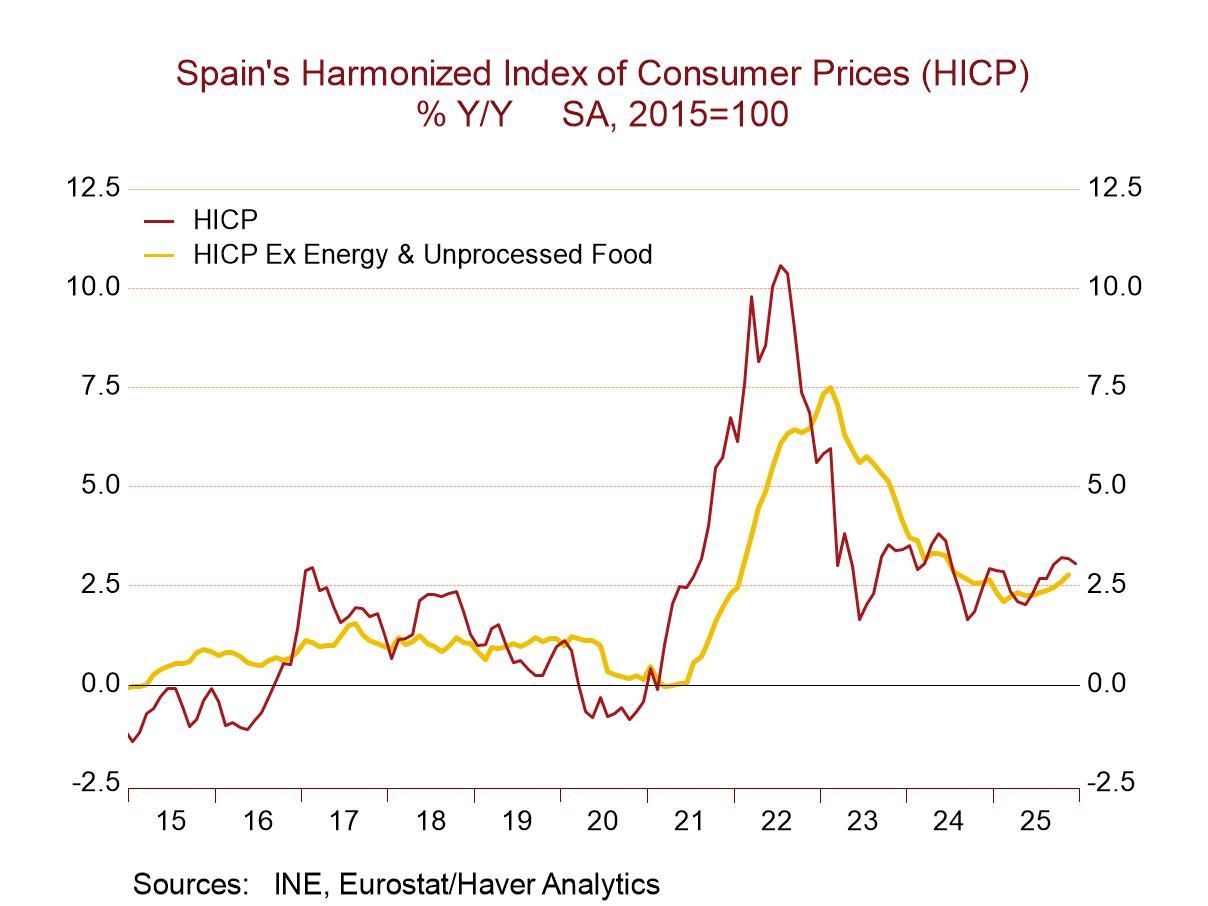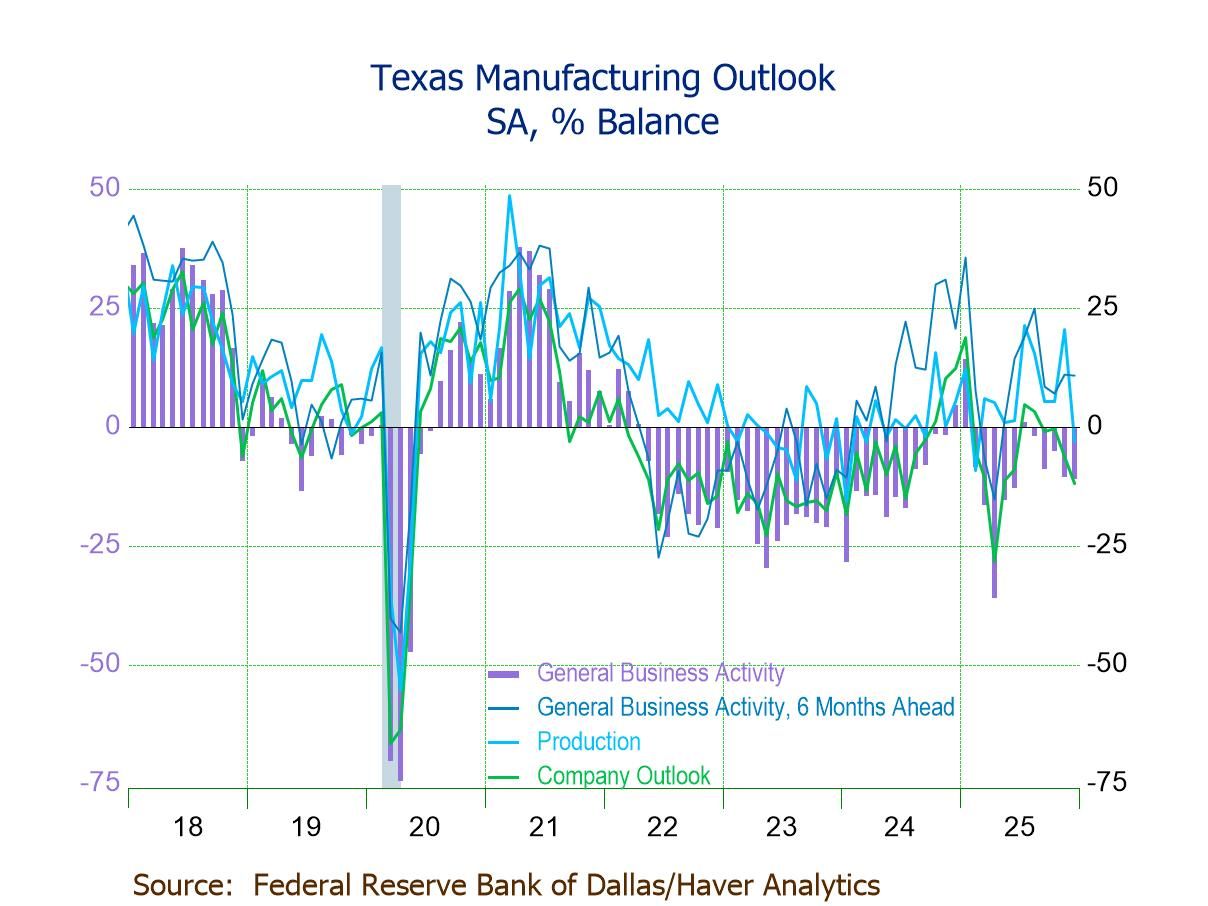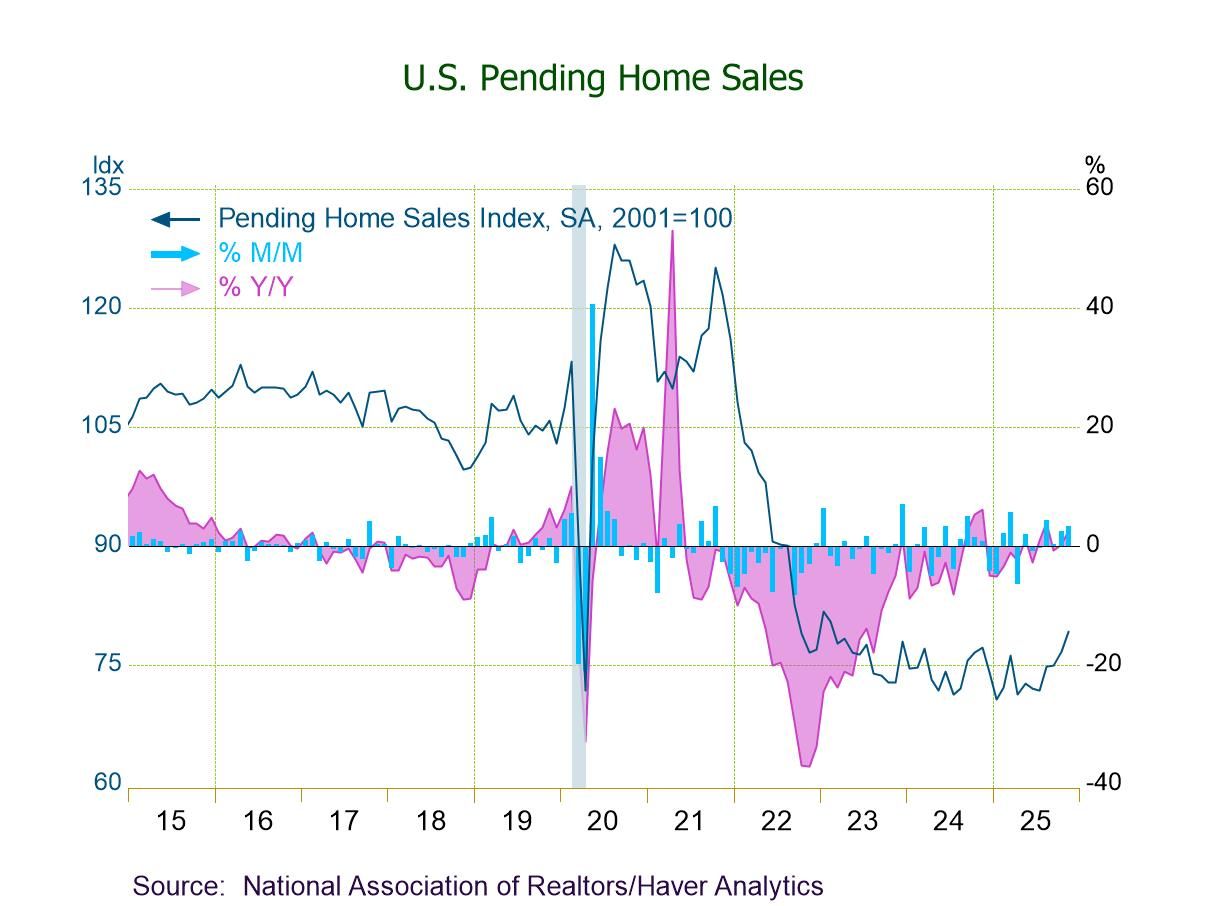U.S. Index of Leading Indicators Fell Again in June
by:Sandy Batten
|in:Economy in Brief
Summary
- Leading index declined for the 15th consecutive month.
- Coincident Economic Index unchanged after two monthly increases.
- Lagging Economic Index also unchanged.


The U.S. Leading Economic Index (LEI) fell 0.7% m/m in June after a slightly upwardly revised 0.6% monthly decline in May (initially -0.7% m/m), according to a report released today by The Conference Board. A 0.6% m/m decline in June had been expected by the Action Economics Forecast Survey. The June LEI at 106.1 was the lowest level since July 2020. This was the fifteenth consecutive monthly decline for the index. In its more than 60-year history, during which it has been a very accurate indicator of recession, it has never declined for 15 consecutive months without the economy subsequently entering a recession.
Over the six-month period between December 2022 and June 2023, the LEI fell 4.2%, deeper than its 3.8% drop over the prior six months (June-December 2022). The year-on-year rate of decline was unchanged at -7.8%, off its recent low of -8.0% reached in April.
Six of the LEI's ten indicators made negative contributions to the overall index in June, led by consumer expectations for the economy (-0.21ppt), ISM new orders (-0.21ppt) and the inverted yield curve (-0.17ppt). Only two of the index’s components made positive contributions with 0.20ppt contribution from the S&P 500 stock price index the only meaningful addition. The remaining two of the index’s components were unchanged in June.
The Coincident Economic Index (CEI) was unchanged in June (+1.8% y/y) after an unrevised 0.2% m/m increase in May. Three of the four CEI’s components made positive contributions in June, led by a 0.8ppt addition from personal income less transfer payments. Increases in nonfarm payroll employment and in manufacturing and trade sales also made positive contributions. By contrast, these were completely offset by a 0.11ppt drag from industrial production, reflecting the ongoing hit to manufacturing activity delivered by the Federal Reserve’s aggressive monetary tightening.
The Lagging Economic Index (LAG) was also unchanged in June (+3.0% y/y) following a 0.1% monthly gain in May. This index has been little changed over the past four months. Three of the index’s seven components made positive contributions in June, one was unchanged and three made negative contributions, led by a 0.22ppt drag from the rise in the services CPI.
The ratio of the coincident index to the lagging index is also viewed as a leading indicator. This measure was unchanged in June after having risen 0.1% in both April and May. It has been little changed during this year and is clearly not as negative as the indication from the leading index.
The Conference Board figures are available in Haver's BCI database; the components are available there, and most are also in USECON. The expectations are in the AS1REPNA database. Visit the Conference Board's site for coverage of leading indicator series from around the world.


Sandy Batten
AuthorMore in Author Profile »Sandy Batten has more than 30 years of experience analyzing industrial economies and financial markets and a wide range of experience across the financial services sector, government, and academia. Before joining Haver Analytics, Sandy was a Vice President and Senior Economist at Citibank; Senior Credit Market Analyst at CDC Investment Management, Managing Director at Bear Stearns, and Executive Director at JPMorgan. In 2008, Sandy was named the most accurate US forecaster by the National Association for Business Economics. He is a member of the New York Forecasters Club, NABE, and the American Economic Association. Prior to his time in the financial services sector, Sandy was a Research Officer at the Federal Reserve Bank of St. Louis, Senior Staff Economist on the President’s Council of Economic Advisors, Deputy Assistant Secretary for Economic Policy at the US Treasury, and Economist at the International Monetary Fund. Sandy has taught economics at St. Louis University, Denison University, and Muskingun College. He has published numerous peer-reviewed articles in a wide range of academic publications. He has a B.A. in economics from the University of Richmond and a M.A. and Ph.D. in economics from The Ohio State University.






